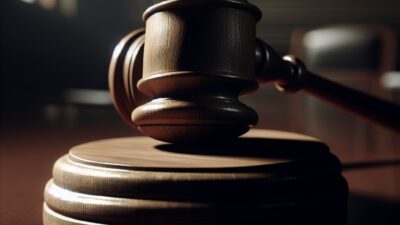California Suspends Environmental Laws to Facilitate Post-Wildfire Rebuilding
In a significant response to the catastrophic wildfires that devastated Southern California, state officials have temporarily suspended certain environmental regulations that could hinder the rebuilding efforts in the affected coastal areas. This decision aims to expedite recovery for victims who lost their homes and businesses during the catastrophic events beginning on January 7, which claimed over 10,000 structures.
Destruction and Uncertainty Along the Pacific Coast
The wildfires have caused widespread devastation along the picturesque Pacific Coast Highway, leaving many residents in fear of not being able to rebuild their lives. Teddy Leonard, owner of the esteemed seafood restaurant Reel Inn, expressed his concerns, stating, “We’re afraid they won’t let us rebuild. It’s very scary.” Such sentiments reflect the anxiety among those who have lost their cherished establishments and homes to the relentless flames.
Regulatory Changes in Response to the Crisis
Under normal circumstances, California law mandates that rebuilding efforts undergo an extensive environmental review process. However, in light of the recent fires, Governor Gavin Newsom has signed an executive order suspending this requirement for those affected. The move aims to facilitate a quicker recovery process for victims looking to rebuild their damaged properties.
The California Environmental Quality Act (CEQA) typically necessitates a review of potential environmental impacts before building permits are granted. Additionally, the California Coastal Act safeguards sensitive coastal and marine habitats, further complicating rebuilding efforts in fire-impacted areas. However, these laws have been temporarily set aside to enable faster reconstruction.
Governor Newsom’s Executive Order
“When the fires are extinguished, victims who have lost their homes and businesses must be able to rebuild quickly and without roadblocks,” Governor Newsom stated. His message underscored the urgency of accelerating the recovery process. The executive order is aimed at reducing permitting delays, marking an essential first step towards allowing communities to recover “faster and stronger.” The governor has also instructed state agencies to explore additional avenues to streamline rebuilding and recovery efforts.
Controversy Surrounding the Environmental Review Process
Despite the immediate need for expedience in rebuilding, CEQA and the additional Coastal Act face criticism from various quarters. Opponents of these laws, including some environmentalists, argue that their strict regulations can be excessively burdensome and costly for developers and municipalities. Attorney Eric Buescher from the environmental nonprofit San Francisco Baykeeper voiced his concerns, commenting, “I don’t think that anybody really thinks that CEQA works exactly how it’s supposed to.” This critique points to a growing frustration surrounding the effectiveness and adaptability of these environmental regulations.
Impact on Reconstruction Efforts
Many homeowners in Malibu, where the fires wreaked particular havoc, find themselves at the mercy of local land regulations designed to protect the natural coastline. Critics argue that these laws may impede necessary reconstruction, especially in areas prone to future climate challenges like rising sea levels. The question remains whether the suspension of such regulations will indeed lead to a successful and balanced recovery.
Federal Support Following the Destruction
In a move to aid California’s recovery, President Biden announced that the federal government would cover all costs related to debris removal and fire management efforts for a period of 180 days. This initiative aims to provide immediate relief and support for local and state recovery efforts in the aftermath of the devastating wildfires.
Looking Ahead: A Balancing Act
The suspension of environmental regulations represents a critical intersection between urgent human needs and environmental protections. As the rebuilding process commences, state officials, residents, and environmental advocates will need to engage in a robust dialogue about sustainable development practices and long-term environmental stewardship.
The challenges posed by natural disasters highlight an ongoing dilemma: how to protect the environment while also ensuring that communities can bounce back from calamity. California’s response to its recent wildfire crisis may set a precedent for future disaster recovery efforts, balancing immediate human needs against the imperatives of environmental protection.
Conclusion: Community Resilience in Focus
As California embarks on the long road to recovery from one of its most devastating natural disasters, the importance of community resilience becomes evident. Temporary regulatory suspensions may provide immediate relief, but they must be coupled with thoughtful planning and sustainable practices to ensure a balanced and effective recovery. The journey ahead will require collaboration, innovation, and a commitment to rebuilding not just homes and businesses, but also trust in the processes that govern environmental and community protections.












